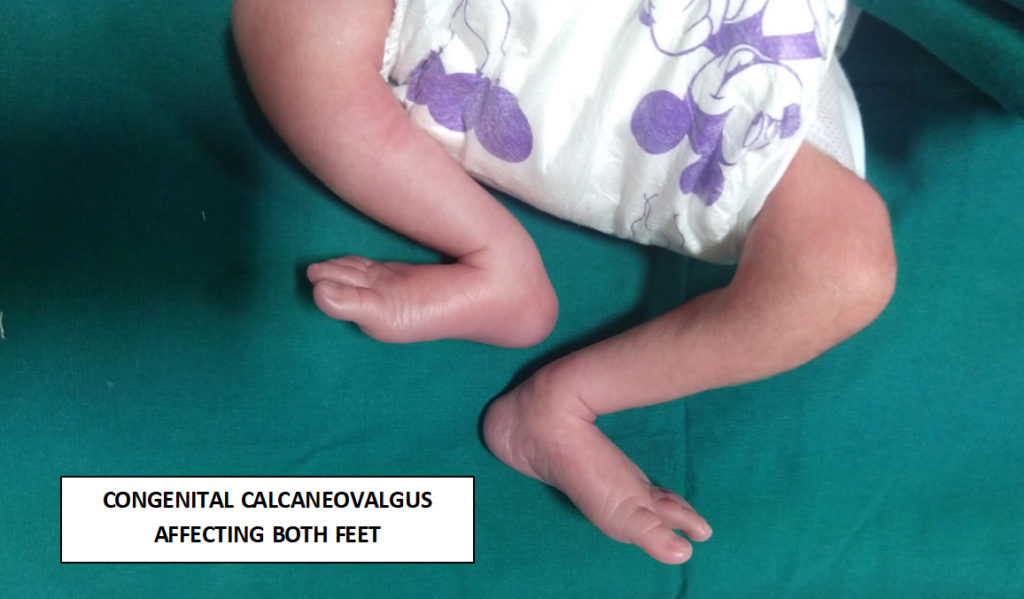Calcaneovalgus
Calcaneovalgus foot is a condition in infants where the foot is pushed up against the front of the leg. It’s caused by a baby being crowded or growing in an unusual position in the uterus. There is more chance of calcaneovalgus foot during first born babies and in babies with more birth weight. Overcrowding within uterus can lead to other birth problems like developmental dysplasia hip (DDH) and muscular torticollis (neck bent and turned to one side). So, these conditions can co-exist with calcaneovalgus at birth. Due to the association with hip dysplasia, infants with calcaneovalgus feet should have their hips examined by a trained healthcare provider.

Calcaneovalgus feet that are flexible will almost always improve spontaneously with time. Gentle stretching, during breast feeding and bathing, may help improve the condition. Most babies’ feet will look normal within one to two months.
Rarely in more severe or rigid cases, a series of plaster casts may be required.
Calcaneovalgus feet may be associated with posteromedial bowing of tibia [a type of bent in the leg bone(s)]. This condition needs longer treatment in the form of plaster casts, supportive brace wear etc.
If your child was recently diagnosed with a calcaneovalgus foot deformity, schedule an appointment so we can make sure your child’s feet are flexible, and that the neck and hips appear normal as well.
